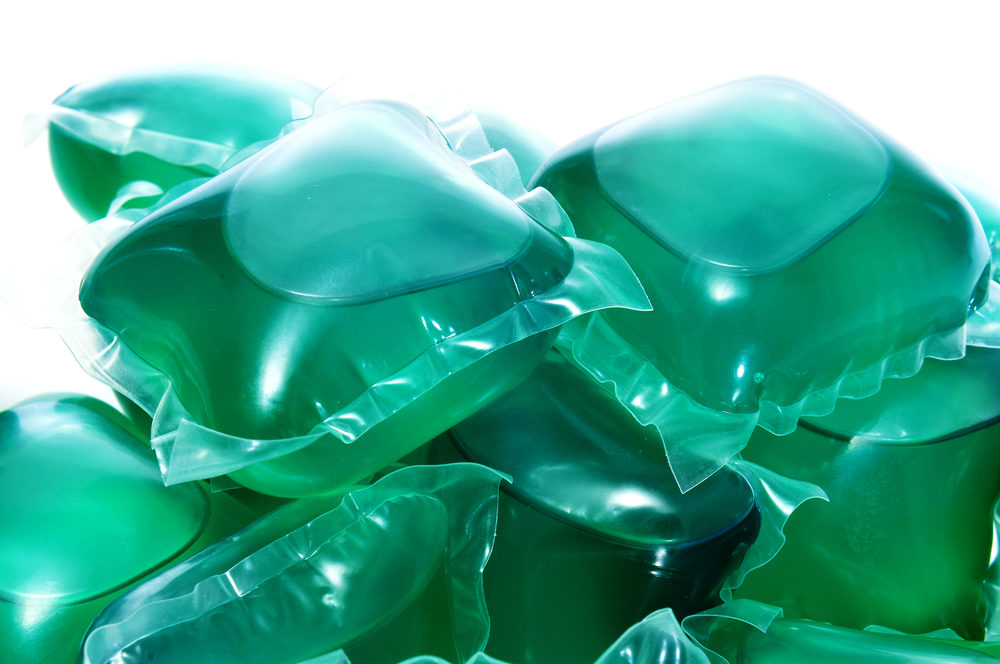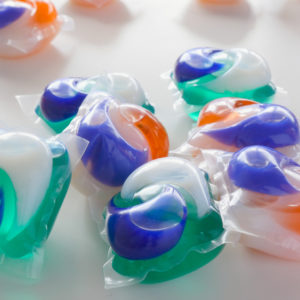Laundry Pod Risks Lead Consumer Reports To No Longer Recommend Use

Amid continuing concerns about the risk of laundry detergent poisoning, Consumer Reports indicates that it no longer recommends use of the single-load pods until the industry adopts tougher safety measures that reduce the number of injuries reported each year.
Laundry pods have increased in popularity in recent years, containing a pre-measured amount of detergent in a gel pack that is designed to be dropped into the washing machine before each load. However, thousands of problems following exposure to laundry pods have been reported, primarily among young children or mentally handicapped adults who place the brightly colored pods in their mouth.
Consumer Reports suggests that the laundry pod risks may outweigh the benefits, indicating last week that all laundry detergent pods are being removed from its lists of recommended laundry detergents.

Learn More About
Single-load Laundry Detergent Pod Poisoning May Result in Serious Injury for Children.
Learn More About this Lawsuit SEE IF YOU QUALIFY FOR COMPENSATIONThe gel packs are sold in bright colors and are often packaged in a way that makes them appear similar to a candy or an infant teething toy. Given the concentrated nature of the laundry detergent, ingesting the liquid may cause severe and potentially life-threatening injuries, often requiring immediate hospitalization.
While some manufacturers have taken steps to increase warnings or change the product packaging, injury reports continue and most manufacturers have resisted calls to individually wrap each laundry pod to reduce the risk of injury.
Consumer Reports cited data collected by the American Association of Poison Control Centers (AAPCC), indicating that within the first six months of 2015, poison-control centers received 6,046 reports of children younger than five years old ingesting or inhaling pods, or getting the pods contents, which can be toxic, on their skin, eyes and face. Consumer Reports indicated that the current rate of reports is on track to surpass the 2014 total of 11,714 incidents.
Information collected from the AAPCC indicates that, of the 10,877 reported pod related exposures, 4,692 required some sort of medical attention at the emergency rooms and treatment facilities, which is more than all other laundry related detergents combined.
Professor of Pediatrics at the University of Minnesota, Marie Steiner, M.D., stated that the pod exposures are linked to a wide number of symptoms, suggesting they are more toxic than other types of laundry detergent.
The Consumer Reports analysis of the injury reports found that at least two children under the age of five have died from the ingestion of laundry detergent pods and the symptoms following ingestion are becoming more serious.
Before the introduction of laundry pods, detergent injuries usually consisted of nothing more than an upset stomach. However, pod related injuries have included vomiting, lethargy, delirium, respiratory distress, wheezing, gagging, and drooling. Steiner stated that many consumers are not aware of the increased hazards of the pods and the medical community is still attempting to make sense of them.
Call For New Safety Features
With 10,000 plus exposures per year, the topic of establishing increased safety standards including product design and packaging has caught the attention of congress members and manufacturers to find ways to make the products safer.
Congress Members Rep. Jackie Speier and Senator Richard Durbin introduced the Poisoning and Child Safety (PACS) Act of 2015, offering a bill that would require the Consumer Product Safety Commission to establish safety standards with additional protections such as making the pods less attractive and eliminating their enticing candy-like appearance and scent.
Proctor & Gamble, the makers of Tide Pods, redesigned their pod containers and equipped them with a hard-plastic container with three safety latches and added more prominent safety warning labels under regulatory pressure. These changes sparked additional manufacturers, such as Costco’s Kirkland Signature brand, to incorporate similar safety features.
In 201,3 the American Cleaning Institute, which represents the detergent industry, launched an informational campaign in attempt to educate consumers about proper use and storage to protect children.
Chairman of the U.S. Consumer Product Safety Commission, Elliot Kaye, has indicated that parents and caregivers deserve a robust standard that makes it as difficult as possible for children to be poisoned by the packs. Several new proposals that have been drafted by the CPSC have included additional “burst strength” that would make it harder for children to bite through or dissolve the pod in children’s hands. Other requests have called for an additional individual wrapper around the pods, providing another layer of defense that is not dissolvable, but able to be peeled off before dropping the pod into the washing machine.
Consumer Reports has recommended that while the redesign of the laundry pod products are underway, consumers, parents and caregivers with children with mental disabilities or any household with children under six years old should avoid using or even storing the single-load laundry detergent pods in their homes. Given the continued dangers presented by the pods and the potentially fatal risks if children access the pods, the consumer watchdog claims the risks outweigh the benefits.
In response to the thousands of children affected by laundry detergent pod poisoning, the Detergent Poisoning and Child Safety (PACS) Act 2015 was introduced earlier this year, to establish safety regulations surrounding single-use pods and to reduce the risk posed to children.
A number of laundry pod injury lawsuits are currently being pursued against manufacturers of the products, alleging that inadequate steps were taken to ensure the safety of the products.
Get more articles like this sent directly to your inbox.
"*" indicates required fields





0 Comments